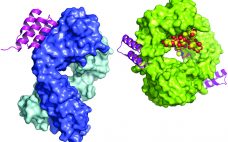It surprises some folks in the BPI community to learn that I’m a journalist by training, boasting a mere bachelor of arts degree in journalism despite my high-fallutin’ technical editor title. I was originally trained in Associated Press (AP) style by a veteran newsman who spent many years working for AP’s main competitor, United Press International (UPI). When I first started on BioPharm back in 1996, I had to get up to speed quickly on the stylebooks of Chicago and…
June 2018
June Spotlight
Holding True to the Price-Cap Pledge As in previous years, 2018 started with more than 30 drugs increasing in price on the US market. However, data and analysis firm GlobalData observes that criticism from politicians and the public seems to be keeping the industry to a 10% self-imposed price-hike limit. It began with Allergan CEO Brent Saunders pledging to police pricing in 2016, when he stated that his company would limit itself to one price increase per year and only…
Cultivating Better Working Relationships with Contract Manufacturing Organizations: A Panel Discussion
On 21 March 2018, a panel discussion during BPI West in San Francisco addressed ways to improve working relationships between sponsors and contract manufacturing organizations (CMOs). Our goal as organizers was to avoid retreading overfamiliar ground: Many outsourcing articles stress the importance of good communication without delving into actual strategies for improvement. So I asked the panelists to focus on the word better and what that actually means in this context. The most productive way to approach such a discussion…
Methods on the Move: Addressing Method Transfer Challenges for the Biopharmaceutical Industry
Analytical method transfers are essential components of the current global biotechnology environment. Analytical method transfer can be defined as “a documented process that qualifies a laboratory (the receiving laboratory) to use a validated analytical test procedure that originated in another laboratory (sending laboratory), thus ensuring that the receiving laboratory has the procedural knowledge and ability to perform the transferred analytical procedure as intended” (1). The goal is to ensure that a method continues to perform in the validated state regardless…
Demand for Capacity Drives China’s Biomanufacturing Expansion
Over the past year, most of China’s biomanufacturing facilities have been engaged in active facility expansion. Based on our research of facilities under active construction, that growth has expanded total capacity in China by over 10%. Our research updates the Top 60 Biopharmaceutical Manufacturers in China directory from BioPlan Associates (1) and shows a continuing increase in new bioprocess capacity. This trend is unlikely to abate. As well as contacting our top 60 biomanufacturers, in fact, we contacted a number…
Host-Cell Protein Risk Management and Control During Bioprocess Development: A Consolidated Biotech Industry Review, Part 2
Even with increased understanding of host cell proteins (HCPs) and their potential risks, no practical approach has been made available for HCP risk management during bioprocess development. A BioPhorum Development Group (BPDG) team has identified common HCP-related risk factors and built a template for semiquantitative risk assessment during process development based on publicly available information. To this end, the BPDG HCP working team’s assay and knowledge-sharing experts have established a common HCP risk assessment tool and mitigation strategy to guide…
Dual Sourcing of Protein A Resin to Mitigate Supply Chain Risk: A Comparative Study to Determine Equivalence
Protein A affinity chromatography is a well-established technology that is used extensively for large-scale purification of monoclonal antibodies (MAbs). With this mode of chromatography, very high product purity can be achieved in a single, relatively simple unit operation. A solution containing the target protein of interest is applied to a liquid-chromatography column at near-neutral pH, and one or more wash steps follow to lower product- and process-related impurities (1). Product is eluted through application of a low-pH buffer. Finally, the…
Statistical Properties of WECO Rule Combinations Through Simulations
The practice of quality control is promoted by the US Food and Drug Administration (FDA) and European Medicines Agency (EMA). A number of process control charts are used in many biopharmaceutical companies to increase production and lower process costs. Here we focus on performance of three commonly used control charts: Shewhart control charts with WECO and supplementary rules, monitoring charts with exponentially weighted moving average (EWMA), and cumulative sum (CUSUM) charts. WECO rules got the name from a quality control…
Innovators and Biosimilar Companies: Experts Predict Intense Conflicts Ahead
CPhI Worldwide (organized by UBM) announced last fall the final section findings of the fifth edition of the CPhI Annual Report. Presented live at the meeting in Frankfurt, Germany, the report is now available online. It highlights immediate and long-term trends in pharmaceutical data, regulation, generics, and biosimilars. Four experts gave their views. They warned that the US Food and Drug Administration’s (FDA) approach to achieving six-sigma (nearly perfect or 99.9997% defect-free) quality is failing in respect to the pharmaceutical…







